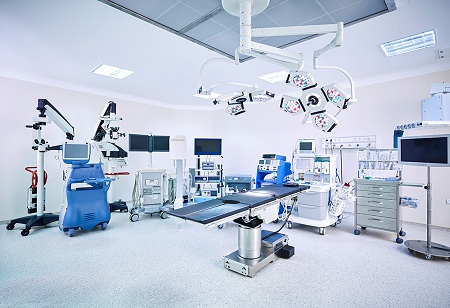Finance Minister, Nirmala Sitharaman announced a credit guarantee scheme of Rs 50,000 crore meant to give a boost to
healthcare infrastructure in tier-2 & 3 cities of the country which was overburdened during the second wave and needs to be ready for a predicted third wave as well. The announcements have been largely well received by industry players, who were of the view that these measures were a much needed relief for the stressed
healthcare sector in India.
Current Scenario of tier-2 & 3 Cities
There is no doubt about the fact that India produces brilliant doctors every year, deploys inventive medical equipment and is progressing gradually in digital health. But large section of country’s population living in tier-2 & 3 cities still remains deprived of access to this progress. The advent of Covid-19 pandemic has only made things worse for these cities as urbanization is still not quite there in these cities. People living in these cities face problems like lack of accessibility to quality treatment. The lack of well trained staff and inferior quality of treatment is one of the major issues in these cities which puts the life of people living in these cities in danger.
Paying the price for ignorance
It is well known that for healthcare needs, tier-2 & 3 city people mostly rely on local clinics and quacks. Ashok Patel, CEO & Founder, Max Ventilator says, “The focus on tier-2 & 3 cities is particularly satisfying which would go a long way in addressing the big city-small town healthcare gap in the country. With the predictions of an even more destructive third wave, these policy stimuli would also give some momentum to health facilities and infrastructure across the country in the immediate term too.”
There has been an imbalance in the availability of medical facilities and health manpower in big and small cities. Health facilities in tier-2 & 3 cities face many operational difficulties. These include inadequate funding for drugs supplies, diagnostic facilities, laboratory equipment, etc. and these are an extremely hopeless condition which is a very
sad reflection on the functioning of health centres and a general deterioration of physical infrastructure.
According to the data published by the National Health Profile, around 80 per cent doctors reside in tier-1 cities out of the total 10 lakh registered modern medicine doctors. With the highly understaffed and overburdened hospitals, there is an urgent requirement to increase the number of highly qualified medical professionals along with technology in tier-2 & 3 cities.
How the policy will strengthen health infra
The loss of life caused by Covid-19 catastrophe in tier-2 & 3 cities of India is a result of years of neglect of its public healthcare structure and a substantial investment to ameliorate the infrastructure is of utmost importance now. The stimulus package of 50,000 crore rupees for the health sector in tier-2 & 3 cities has come as a huge relief since the second wave has exposed the condition of the healthcare system in these cities. It was the need of the hour to scale up the medical infrastructure. There is a guaranteed coverage of 50 per cent for expansion of health related projects and 75 per cent for new projects which has shown the government’s commitment towards improving the present damaged state of affairs.
The measures announced by the Finance Minister are a much needed step in bolstering the healthcare infrastructure of India. The hospitals and nursing homes in tier-2 & 3 cities of India will benefit from direct financial support measures provided by the central government. Investment in modern equipment, including on-site oxygen gas generation systems can be a costly affair.
Reliable supply of oxygen through an on-site oxygen generator will alleviate the woes experienced in these cities during the on-going second wave and provide independence and strength to hospitals to face the much speculated third wave. However, it is equally important to ensure that these funds are in fact utilised and a clear time bound investment plan is laid out as often it is seen that budgeted allocations are not used properly.
What more could be done
Experts say that the resilience and strength in the medical infrastructure of tier-2 & 3 cities cannot be achieved without the intervention of science. To rejuvenate the existing health infrastructure in these cities, the government can adopt various approaches like up-skilling the first line of defence that is frontline workers of these cities, open more laboratories and implement technology to solve the pressing issues among others and ensure proper funds for the scientists which encourages them to do more research and innovation to help under-served population.
70 years back, tier-2 & 3 cities of India were the most underdeveloped in terms of healthcare. But today, growing at a brisk pace, the healthcare sector in tier-2 & 3 cities is poised to reach a worth in size of 5.6 trillion rupees by the end of 2022, which will bring along a host of opportunities for all the stakeholders.
